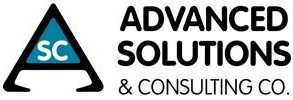You recently returned from attending the 2017 Multi Unit Franchise Conference. You heard loud and clear from colleagues who have invested in next generation Enterprise Resource Planning Software. The message is clear. Good ERP Software will make you money period. No need to wait anymore. It’s time to act. And Advanced Solutions and Consulting (ASC) is here to guide you to the finish line.
Here is a success story from a customer who deployed Cloud Based Enterprise Resource Planning (ERP) Software from Acumatica.
How does P’Kolino define success metric? They defined the results as:
“Avoided hiring 3 additional workers, saving $ 76,000 a year. Saved $ 5,000 annually from avoided return costs. Process 200 orders a day compared to 50 orders a day.”
 (NOTE: P’Kolino is not a franchise owner.)
(NOTE: P’Kolino is not a franchise owner.)
It is clear each company looks at ROI differently and that is indeed the right way.
What is the definition of Strategic ROI and why is it important to understand?
You have heard this time and time again when it comes to deploying new ERP. To start with Multi-unit franchise owners must define exactly what they want to achieve before investing in ERP. Your business value chain has 3 main functions: “SELL”; “DELIVER” and “COLLECT”. For starters you can define success metrics for the business as a whole.
These metrics are then drilled down to each of these functions. These functional metrics are further drilled down into the sub categories for each function. Example of “SELL”: It has 3 sub categories defined as “FIND”; “CLOSE”; and “MAINTAIN”.
It is obvious then there myriad of factors that impact ROI. There are the known and unknown factors. There is the timeline and timeliness aspect. There are the stakeholders across the value chain: “CUSTOMERS”; “COMPANY” and “SUPPLIERS”.
So let’s define Strategic ROI (SROI):
What management defines: a. as the success metrics; b. how the known variables impacting these metrics will be measured and applied (tangible ROI); c. how the unknown variables impacting these metrics are going to be measured and applied (Intangible ROI). Sounds simple but that is not the case.
The idea behind ROI: cost/benefit analysis may be quite simple and straightforward, but the reality is more complicated.
Many costs are clear and easily understood – just look at the competing vendor quotes and project budget. Not so simple. There may be “hidden” costs that are easily overlooked. Similar situation arise on the benefits side. This tends to be even more difficult. You will essentially be making at best a forecast of the positive impact of the new equipment/systems on company operations.
These will include costs related to sales, production, labor, inventory, and more. Also many of the benefits may be “indirect” such as quality of life for employees, for example, might improve productivity (direct savings) but also reduce absenteeism and employee turnover. That’s pretty hard to predict.
Here is a pictorial view of “cost elements” when considering new ERP as “On-Premise” vs “Cloud Computing”

And finally let’s talk Tangible vs. Intangible ROI
Tangible ROI is mostly the traditional way of calculating ROI. To simplify, I will spend x dollars, and in a specified time period I will receive y dollars in return. If y is greater than x and the time to recover y is reasonable, then the investment would be considered wise. A good example is employee out of pocket (OOP) expenses. Let’s day fully burdened team member in accounting costs $ 55K/yr. Now instead of adding another member to the team, I invest in technology instead and the OOP is $ 80K. Then my break- even point is 1 ½ year.
On the other hand intangible ROI includes benefits generally difficult to translate back to pure dollar calculations. For example, if I automate this process, I can then go home at regular time and be with my children every day instead of mostly on weekends. So in this case how does one measure the value of being with your children? The important point here is that not all value and benefits can be translated into pure monetary computations.
James Carroll Is the president of Advanced Solutions and Consulting in Solana Beach, CA, He has over 30 years of experience in business software development. He can be contacted at: jcarroll@solutionsco.com; 310 508 9700
